In Hinduism, Ashtavinayak Temples are important due to their reverence to Lord Ganesha – the remover of all obstacles and problems (Vighnaharta). Lord Ganesha is revered greatly as the God who represents knowledge, intellect, and the removal of barriers. His recognisable elephant-headed shape symbolises the equilibrium between the animal and celestial realms and emphasises the value of flexibility and balance in life. Before beginning any big endeavour, Ganesha is frequently summoned to obtain his blessings for overcoming obstacles and ensuring a smooth route to achievement.
Ashtavinayak Temples: A Complete Guide to the Eight Ganpati Temples of Maharashtra
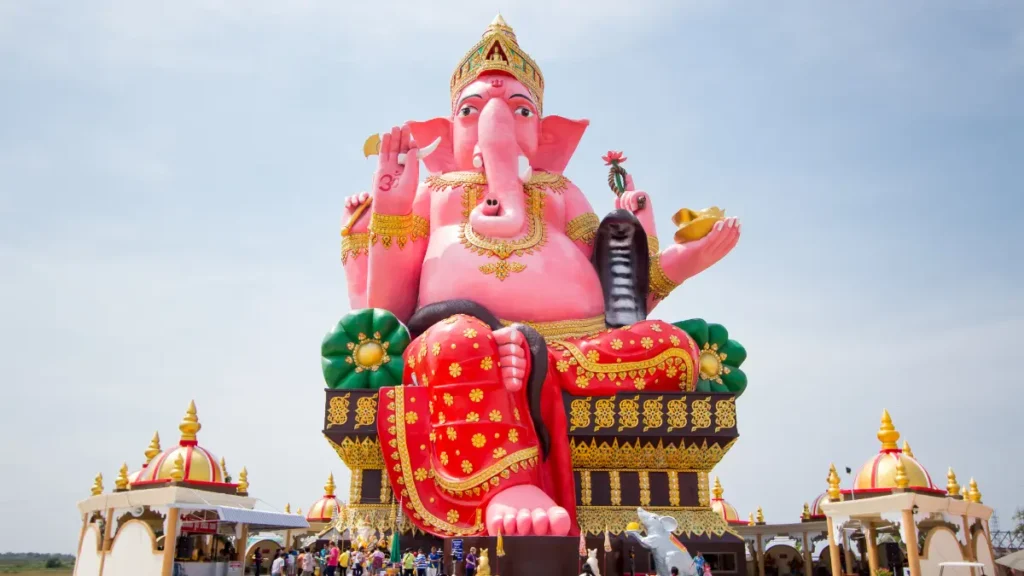
Ashtavinayak Yatra is a popular and significant Yatra, or pilgrimage, among Hindu devotees of Lord Ganesha. Consisting of eight temples devoted to the God in Maharashtra, one must visit all temples in one sequence and not go home until the entire pilgrimage is complete.
There are eight temples in the vicinity of Pune with their history and legends associated with them. It is a 654-kilometer-long trail that starts and ends at Moreshwar Temple in Moregaon. A devotee travels from the primary site of Moreshwar through seven others and returns to Moreshwar to complete the Ashtavinayak darshan. The pilgrimage takes about three days, including time for halting. Travelling by car or taxi is more helpful in finishing this yatra, but you can also travel by bus and train to every destination.
The sequence of Ashtavinayak Ganpati Names is as follows:
- Mayureshwar/Moreshwar Temple
- Siddhivinayak Temple
- Ballaleshwar Temple
- Varadvinayak Temple
- Chintamani Temple
- Girijatmaj Temple
- Vighneshwar Temple
- Mahaganpati Temple
1. Mayureshwar Ganesha Temple
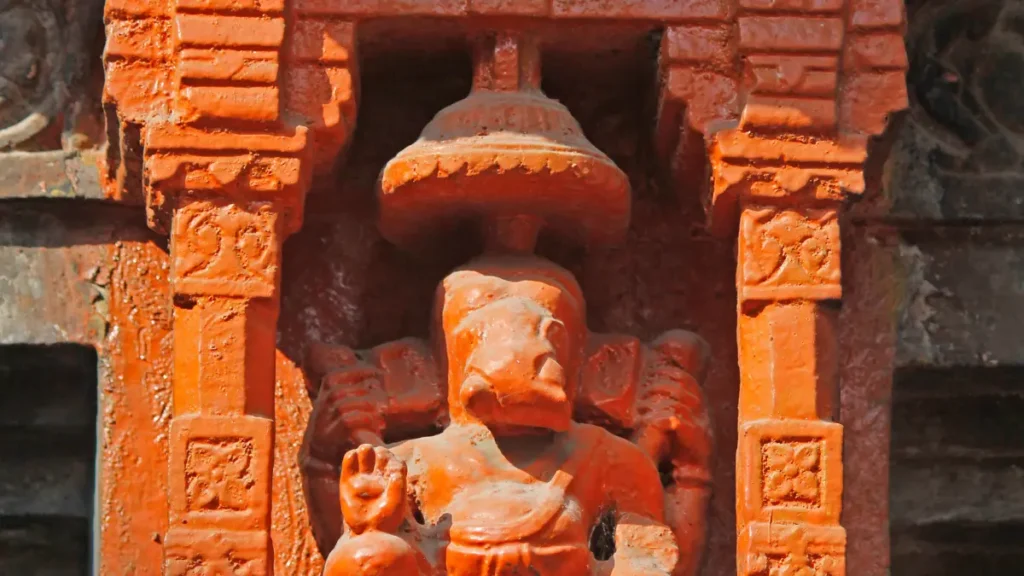
This place is the most significant one in the pilgrimage. On the banks of the Karha River, Mayureshwar or Moreshwar Mandir (temple) is approximately 60 kilometres from Pune and 216 kilometres from Mumbai in Moregaon. The idol of Ganesha here has three eyes, and His trunk is pointed towards the left, which is the direction of success.
The temple has a unique architecture with four minarets perched on each corner – said to have been built to keep attacks at bay during the Mughal Era. The north-facing entrance has two deepstambhs (beacons) in the front. Another peculiar thing about the temple is the Nandi bull seated before it. Nandi is usually only seated in front of Lord Shiva temples. Legend has it that a bullock cart carrying the idol of Nandi crashed here, and then the idol could not be moved.
The mythological legend associated with Moreshwar Mandir is that Lord Ganesh fought and slew the demon Sindhu here. The idol here was established by Lord Brahma twice, along with the idols of Siddhi (Capability) and Riddhi (Intelligence). However, Ganesha’s idol currently worshipped here is not the same one. The original idol is said to have been hidden by the Pandavas from Mahabharata behind the current one. The current idol is seated on a peacock with six arms and Nagraj (a cobra) on the trunk.
The site is beautiful in its architecture and design, with intricate carvings and peacock sculptures.
2. Siddhivinayak Temple in Mumbai
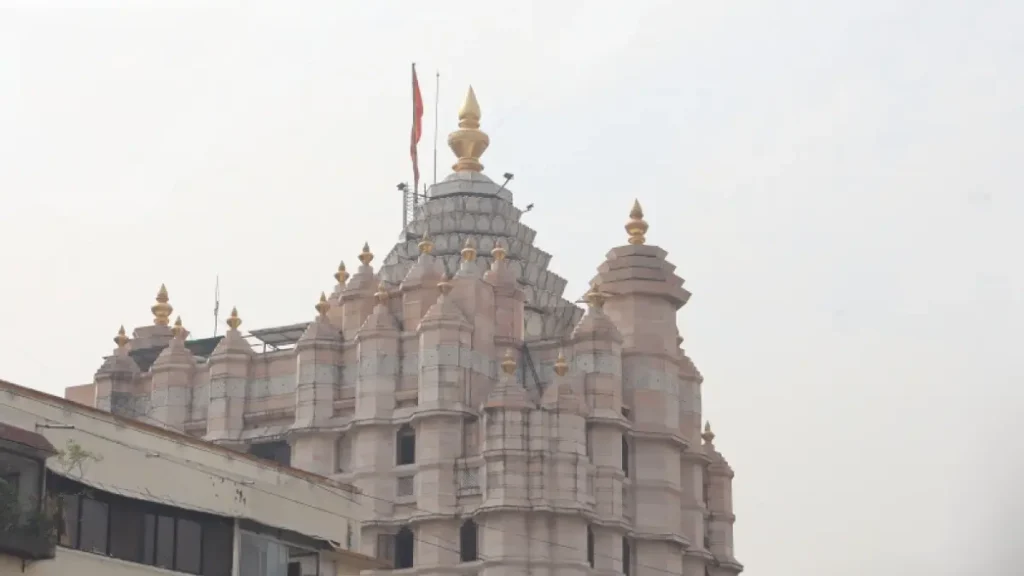
The second temple in the sequence of Ashtavnayak Temples, Siddhivinayak, is situated in Siddhatek, approximately 100 kilometres from Pune and 250 kilometres from Mumbai. The distance between Mayureshwar Mandir and Siddhivinayak Ashtavinayak Mandir is about 70 kilometers. The Mandir is on a small hillock and is rich in mythological and cultural history.
The idol at Siddhivinayak is the only one out of all eight Ashtavinayak temples with the Lord’s trunk pointed towards the right – the direction of freedom from attachment. Ahilyabai Holkar, a Maratha queen of the Holkar dynasty, built the north-facing temple’s inner sanctum. As the Mandir is on a hill, one must go all around the hill to complete a pradakshina (round).
Legends show that Lord Vishnu fought two demons, Madhu and Kaitabha, for a thousand years. He then prayed to Lord Ganesh for help, who provided the Maintainer of the World with siddhis that helped him slay the demons. To pay respects, Lord Vishnu created and reinstated the idol of Lord Ganesha here.
3. Ballaleshwar Temple
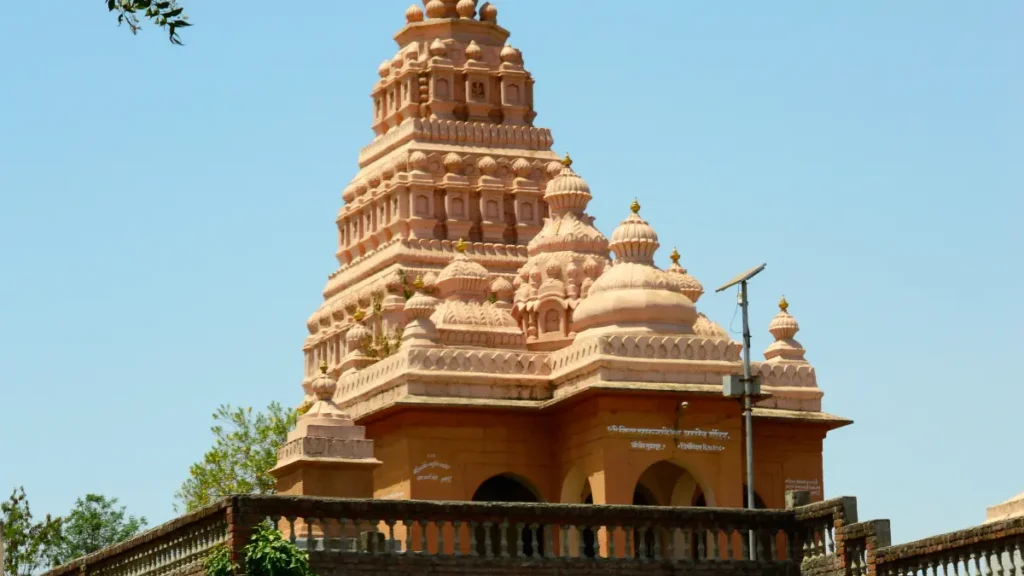
Ballaleshwar Mandir is in Pali, about 200 kilometres from Siddhivinayak Temple, 65 kilometres from Mumbai, and 120 kilometres from Pune. Nana Phadnavis constructed the temple in the 1700s. There are also two lakes here – one of which is reserved for the puja of the God. The pilgrimage place has a mushak (mouse – the vaahan/ride of Lord Ganesha) with a modak laddoo in its paw. The temple’s construction is unique in that whenever the sun rises during winter, the rays fall on the idol of God. The prashaad offered here is not modak laddoo like other Ashtavinayak temples, but besan laddoo.
The mountains of the Sahyadri range act as a backdrop to the Mandir, and the idol here – that faces east – surprisingly resembles them. The legend behind this one says that the son of Kalyansheth, Ballal, was a huge devotee of Lord Ganesha. The boy used to worship Him regularly, and his father did not like it. Kalyansheth beat up Ballal for it and tied him to a tree to be left alone in a forest. As Ballal prayed to God, He appeared and blessed the boy. Ballal then requested the God to stay in Pali, which He accepted – hence the name Ballaleshwar.
Ballaleshwar Mandir is one of the most important sites concerning Ashtavnayak Temples.
4. Varadvinayak Temple
Varadvinayak Mandir is about 40 kilometres from Ballaleshwar Temple, 240 kilometres from Mumbai and 230 kilometres from Pune. The Varadvinayak Mahad Ganpati Mandir is the fourth Ganesha temple on the Ashtavinayak Yatra pilgrimage route that worshippers visit. The site’s other name is Math. The pilgrimage’s building has a relatively straightforward layout, a 25-foot-tall dome, and a tiled roof. The roof has a golden Kalasha on top of it. It is a square Mandir with relatively tiny dimensions. Devotees are permitted to do pooja within the garbhgriha.
According to regional legend, he was devastated when Gritsamav, a scholar, learned he was not a Brahmin by birth. Moving to the Pushpak jungle, Gritsamav began a harsh penance. After hearing his pleas, Lord Ganesha came in front of him. Gritsamav first requested to be acknowledged as a Brahmin before requesting that the God stay in the Pushpak jungle. Lord Ganesha fulfilled both desires. In Mahad, Gritsamav erected a temple dedicated to Him, Varad Vinayak, who grants all desires.
Although comparatively smaller, Varadvinayak Mandir is amongst the most prominent Ashtavnayak Temples.
5. Chintamani Temple
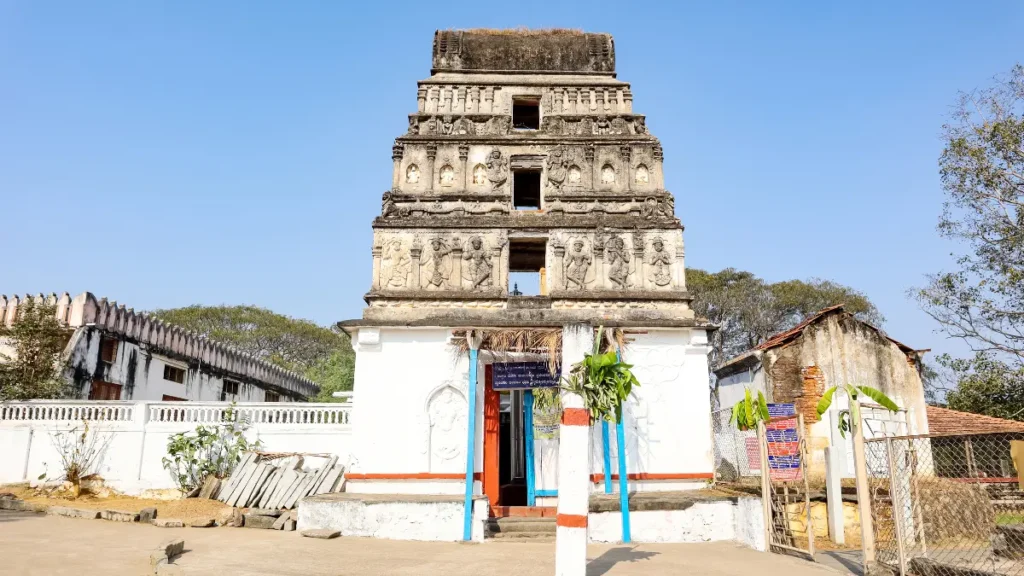
The Chintamani Temple is the fifth and one of the largest Ashtavinayak Ganesha places. It is situated in Theur, around 230 kilometres from Varad Vinayak Mandir, 30 kilometres from Pune, and 175 kilometres from Mumbai. The Mandir is near the confluence of the Mula, Mutha, and Bhima rivers. The idol has diamonds as eyes.
As per legends, Sage Kapila was pleased after Lord Ganesha freed his priceless Chinatamani diamond from the avaricious Guna. The diamond was used to adorn the God, calling him Chintamani Vinayak. Because of the kadamb tree where the event occurred, Theur is also known as Kadambanagar.
Historically, Shrimant Madhavrao I Peshwa’s family deity was Theur’s Chintamani. He had TB and passed away at the early age of 27. It is believed that he passed away at this temple. His wife Ramabai performed Sati.
6. Girijatmaj Temple
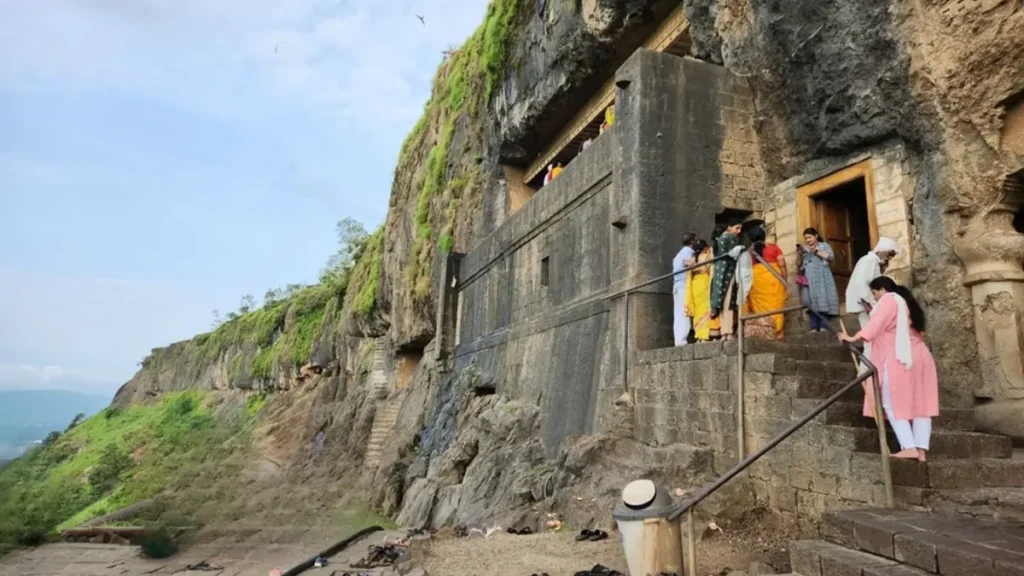
Girijatmaj means ‘the son of Girija (Parvati)’. Girijatmat Mandir is situated in the eighth cave of the 18 Buddhist caves at Lenyadri. These are also referred to as Ganesha-leni. The temple is 107 kilometres from Chintamani Mandir, 205 from Mumbai, and 100 from Pune.
A single stone slope with 307 steps leads to the site, which is cut out of it. The place has a large hall without any props to support it.
A peculiar thing about the idol is that it must be worshipped from the back of the Mandir as it faces north with its trunk to the left. The temple is in the south. The place is without an electric light. It is designed such that sunlight illuminates it continuously throughout the day.
It is said that Parvati, Shiva’s wife, practised penance here to give birth to Ganesha. In response, Lord Ganesha assured her that he would become her son. She made an idol out of the dirt on her body on Chaturthi, the fourth day of Bhadrapad. The idol of the God, a little child with six arms and three eyes, sprang to life. It is said that He spent fifteen years at Lenyadri.
7. Vighneshwar Temple
Vighneshwar Mandir is located near the town of Ozhar, 95 km from Pune, on the banks of the Kukadi River. It is only 15 kilometres from Girijatmaj Temple and 195 kilometres from Mumbai. Tall stone walls on all sides surround the site, and its pinnacle is golden. Surprisingly, the walls can be walked on! The idol has its trunk pointing to the left, looks east, and has rubies in its eyes and a diamond on the forehead. Riddhi and Siddhi flank the Ganesha statue.
According to the mythology surrounding this idol, the King of Gods, Indra, created the demon Vighnasur to ruin the prayer that King Abhinandan had arranged. To the people’s relief, Ganesha vanquished the demon after he went one step further and demolished all Vedic holy rituals. The narrative continues by saying that after being vanquished, the demon implored Ganesha for forgiveness. Ganesha then agreed to his request, but only if the demon stayed away from the area where Ganesha’s worship takes place. The name of Ganesha became Vighnahar or Vighneshwar due to the demon’s request that his name be placed before Ganesha’s.
8. Mahaganpati Temple
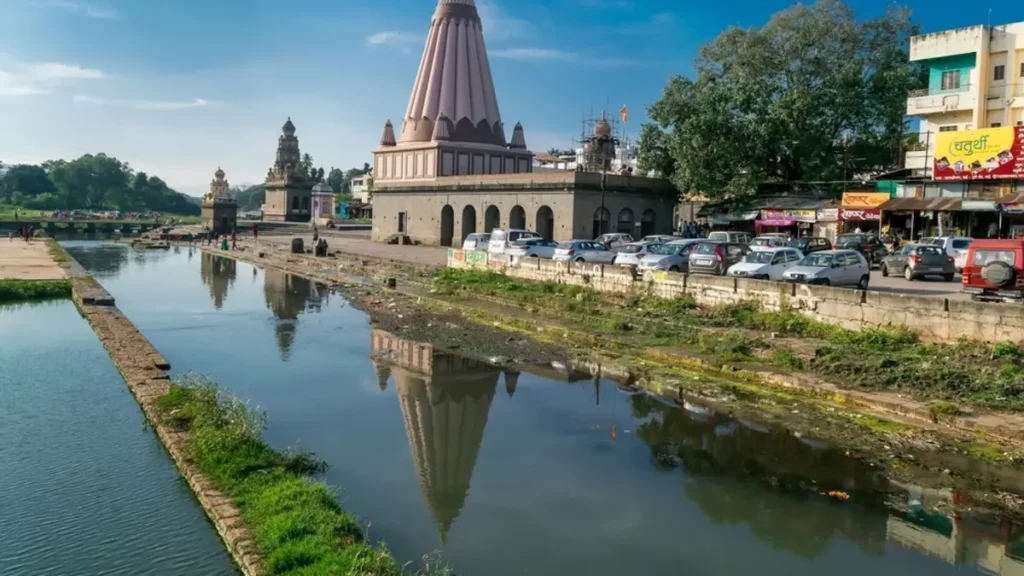
The last of the Ashtavnayak Temples is the Mahaganpati Mandir. Mahaganpati Temple is situated in Ranjangaon. It is about 50 km from Pune, 65 kilometers from Vighneshwar Temple, and 180 kilometers from Mumbai. The ninth and tenth century was when the Mahaganpati Mandir at Ranjangaon was said to have been constructed. The building was constructed to allow the idol to be illuminated by the sun in the morning.
The idol has a large forehead, sits cross-legged, and points its trunk to the left. It looks east. The original idol, known as Mahotkat, is claimed to be concealed in the basement and has ten trunks and twenty hands. However, the site’s administrators dispute the existence of any such idol.
According to legend, a sage once sneezed and released a child; while with the sage, the child learned many good things about Lord Ganesha but also inherited many evil thoughts. This child, Tripurasura, became a demon; he then prayed to Lord Shiva and received three powerful citadels of gold, silver, and bronze, along with a boon of indestructibility, until all three were in a linear position. When the Gods pleaded to Shiva to help save them from the demon, he intervened but soon saw that he could not stop it. After hearing Narada Muni’s counsel, Shiva addressed Ganesha and released a single arrow that sliced through the fortresses and killed the demon.
From here, one returns to the Mayureshwar Mandir to finish the Ashtavinayak yatra, about 90 kilometres from Mahaganpati Temple.
Ashtavinayak Yatra Route Map
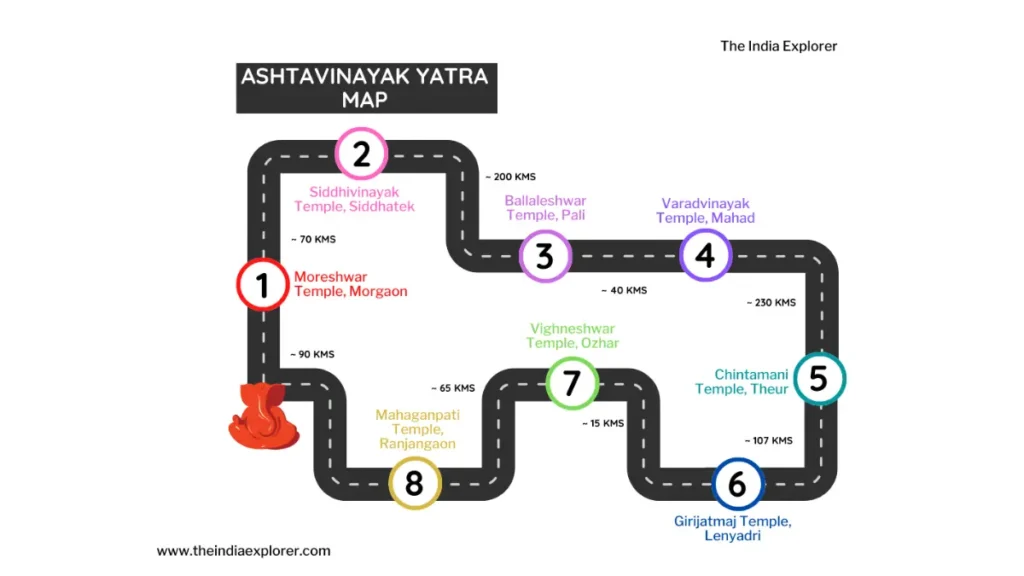
Conclusion
The Ashtavinayak Yatra is a pilgrimage to eight revered Ganesha temples in the Indian state of Maharashtra. Each of these Ashtavnayak Temples has a special mythology connected to it, as well as a distinctive representation of Lord Ganesha. This yatra explores Maharashtra’s rich cultural and historical legacy in addition to being a spiritual journey. A pilgrim’s journey to seek Lord Ganesha’s blessings can be seen as an act of devotion and personal fulfilment. It supports the notion that Ganesha resides in the area and is waiting to show his mercy to his followers in various guises.
Lord Ganesha is a key deity in Hindu devotion because he represents understanding, intelligence, and eliminating obstacles. The Ashtavinayak Yatra is a pilgrimage that honours the various forms that Ganesha has taken across Maharashtra, enabling devotees to strengthen their spiritual ties while discovering the area’s rich cultural and historical heritage.
This Ganesh Chaturthi, we hope you embark on this important pilgrimage to worship the God worshipped by all before every new beginning.
What is the correct order of Ashtavinayak?
The sequence for Ashtavinayak Yatra is Mayureshwar/Moreshwar Temple, Siddhivinayak Temple, Ballaleshwar Temple, Varadvinayak Temple, Chintamani Temple, Girijatmaj Temple, Vighneshwar Temple, Mahaganpati Temple, and then returning to Mayureshwar Temple.
How many kilometres long is the Ashtavinayak Yatra?
The Yatra is 654 kilometres long.
How many days are required for the Ashtavinayak trip?
You can cover all Ashtavinayak Ganpati places in 2 to 3 days.


